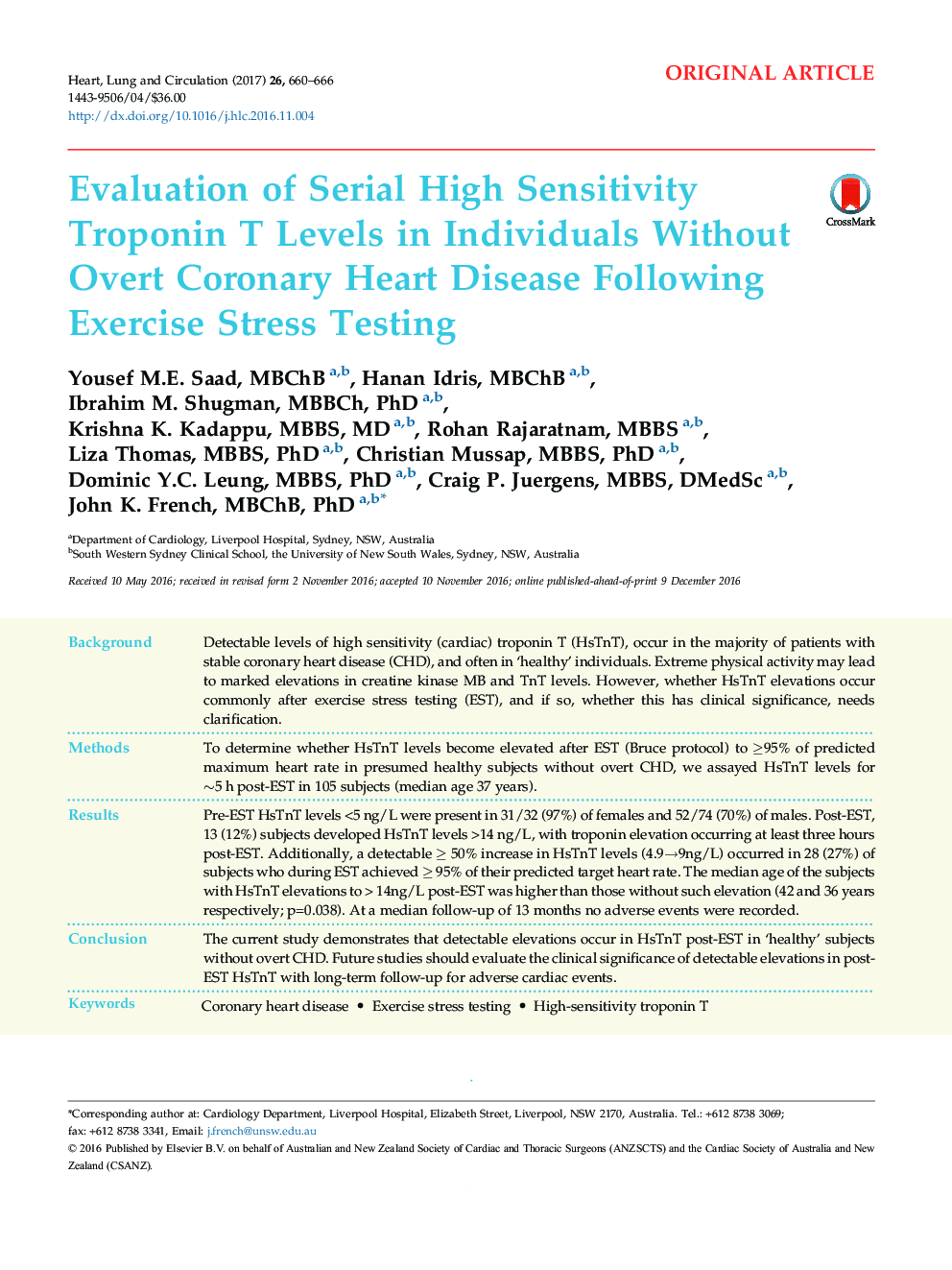| Article ID | Journal | Published Year | Pages | File Type |
|---|---|---|---|---|
| 5602526 | Heart, Lung and Circulation | 2017 | 7 Pages |
BackgroundDetectable levels of high sensitivity (cardiac) troponin T (HsTnT), occur in the majority of patients with stable coronary heart disease (CHD), and often in 'healthy' individuals. Extreme physical activity may lead to marked elevations in creatine kinase MB and TnT levels. However, whether HsTnT elevations occur commonly after exercise stress testing (EST), and if so, whether this has clinical significance, needs clarification.MethodsTo determine whether HsTnT levels become elevated after EST (Bruce protocol) to â¥95% of predicted maximum heart rate in presumed healthy subjects without overt CHD, we assayed HsTnT levels for â¼5 h post-EST in 105 subjects (median age 37 years).ResultsPre-EST HsTnT levels <5 ng/L were present in 31/32 (97%) of females and 52/74 (70%) of males. Post-EST, 13 (12%) subjects developed HsTnT levels >14 ng/L, with troponin elevation occurring at least three hours post-EST. Additionally, a detectable ⥠50% increase in HsTnT levels (4.9â9ng/L) occurred in 28 (27%) of subjects who during EST achieved ⥠95% of their predicted target heart rate. The median age of the subjects with HsTnT elevations to > 14ng/L post-EST was higher than those without such elevation (42 and 36 years respectively; p=0.038). At a median follow-up of 13 months no adverse events were recorded.ConclusionThe current study demonstrates that detectable elevations occur in HsTnT post-EST in 'healthy' subjects without overt CHD. Future studies should evaluate the clinical significance of detectable elevations in post-EST HsTnT with long-term follow-up for adverse cardiac events.
